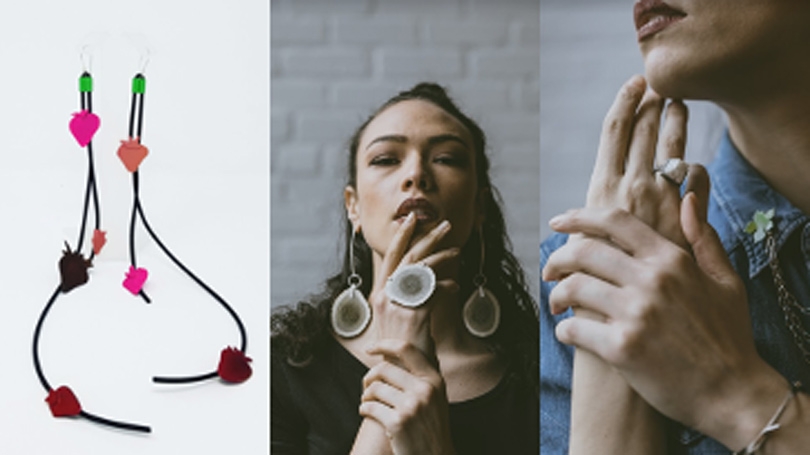Blurred Materialities, Strong Identities: Margaret Jacobs
"My name is Margaret Jacobs. I am Akwesasne Mohawk, and I am a sculptor and jewelry artist… Oh, and I'm a Dartmouth '08." On August 3rd, the Donald Claflin Jewelry Studio hosted Margaret as a guest speaker for their third coffee hour.
"My name is Margaret Jacobs. I am Akwesasne Mohawk, and I am a sculptor and jewelry artist…Oh, and I'm a Dartmouth '08." On August 3rd, the Donald Claflin Jewelry Studio hosted Margaret as a guest speaker for their third coffee hour. Under normal circumstances, the Jewelry Studio (nicknamed the "J Shop" by its staff and regulars) brings guest artists to give masterclasses throughout the term. Jewelry Studio Coffee Hours are not a replacement for in-person artistic instruction. But as a pilot program throughout the summer term, they provided virtual space for Dartmouth's jewelry community.
Margaret's signature technique is powder coating, which involves the use of electrolysis and heat to create a bond between metal and a plastic coating (pictured above).
Her work focuses on the tension between the natural and the man-made, experimenting with contradiction, imitation, and blurring the lines between human and other-than-human. Her juxtaposition of materials—the glaringly man-made nature of plastic combined with the earthly materiality of metal and found objects—provides an excellent avenue for the exploration of this theme. I had the pleasure of interviewing Margaret after the coffee hour. Here is an excerpt from our conversation.
Samantha Newman '22: What draws you to metal as a material?
Margaret Jacobs '08: When I was a student, I did a lot of mixed media, and it just didn't have the structural integrity that I wanted. Once I started working with metal, it felt like a really natural fit in that I could have the strength of it and still make an object appear really light or really organic. I just find that I can do anything that I want with metal. It's a really honest material.
S: As an artist, what do you hope to get across by presenting contradictions in your work?
M: I think that's one of the things that's so at the core of my work that I haven't been able to fully verbalize it yet. I like making things that look fragile, but actually have strength to them. I'm a female, but I do a lot of things in what you would typically consider male-dominated spaces. I'm Indigenous, but white-passing. I don't fit into a lot of boxes, so I think my work is always exploring that.
S: You use the words "reuse," "repurpose," and "reimagine" a lot in your work. Why are those important to you?
M: I think it's tough. I have a hard time making more things to put in the world. It's like, do we need more stuff in the world? No! We don't need more stuff in the world. But that's what I do; I make more things. So being able to either reuse or repurpose something in a new way feels better to me than buying a new material. Part of it's ethical, practical; and then it also gives a whole other history that you wouldn't be able to create by yourself.
Margaret's most recent work will be on view in the Indigenous Fashion Week Toronto online festival this November. To read more about and shop Margaret's work, visit her website.
